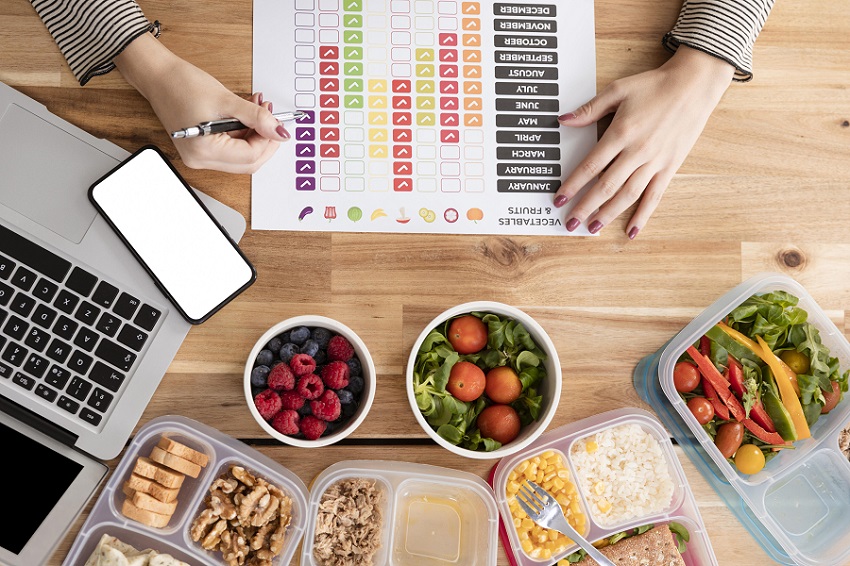Staring at your grocery receipt and wondering, “Is this too much?” You’re not alone. Figuring out a realistic grocery budget for a family of 4 is the first and most crucial step to taking control of your food spending. This isn’t about comparing yourself to others; it’s about finding a sustainable number for your family. We’ll use official USDA data, real-life examples, and a free printable worksheet to help you create a budget that works without sacrificing nutrition or sanity.
The Official Benchmark: USDA Monthly Food Plan
The U.S. Department of Agriculture (USDA) publishes monthly food cost plans that are the gold standard for this topic. They provide four cost levels. For a family of four (with two children aged 6-8 and 9-11), the weekly estimates for February 2024 are:
- Thrifty Plan: $241.30
- Low-Cost Plan: $274.00
- Moderate-Cost Plan: $339.80
- Liberal Plan: $414.50
To find your monthly estimate, multiply these numbers by 4.3 (the average number of weeks in a month). This means a realistic grocery budget for a family of 4 ranges from roughly $1,038 (Thrifty) to $1,782 (Liberal) per month.
What These USDA Numbers *Actually* Mean for You
These figures are helpful benchmarks, but they aren’t one-size-fits-all. Your perfect budget depends on several key factors:
1. Age of Your Children
A family with two teenagers will have a significantly higher food bill than a family with two toddlers. Teen boys, in particular, are legendary for their bottomless appetites.
2. Dietary Preferences and Restrictions
Gluten-free, organic, vegetarian, or allergy-friendly diets often come with a higher price tag due to the cost of specialty products.
3. Where You Live
Geographic location has a massive impact. Grocery costs in a major metropolitan area are much higher than in a rural Midwest town.
4. Your Shopping Habits
Do you shop at discount grocers like Aldi or premium chains like Whole Foods? This is the biggest variable you can control. Our Aldi vs. Walmart price comparison shows just how much you can save by choosing your store wisely.
How to Calculate Your OWN Realistic Grocery Budget
Follow these three steps to find a number that is personalized for your family’s needs and goals.
Step 1: The 4-Week Spending Audit
For one month, save every single grocery receipt. This includes big stock-up trips, quick milk runs, and even that forgotten stop for bread. Don’t judge, just collect. This is your baseline reality.
Step 2: Categorize and Analyze
At the end of the month, use our free Printable Grocery Budget Tracker to categorize your spending. You’ll quickly spot patterns. Are you spending $200 a month on snacks? Is meat eating up half your budget?
Step 3: Set a Target and Trim
Now, set a goal. Look at your total spending and the USDA plans. Could you aim for the “Low-Cost” plan? Identify one or two categories to reduce. Maybe you commit to meal planning to cut down on waste or try one meatless meal a week. A 5-10% reduction is a realistic and fantastic start.
5 Actionable Tips to Hit Your New Grocery Budget
- Embrace Meal Planning: This is the single biggest tool to eliminate waste and impulse buys. Plan your meals around what’s on sale and what you already have.
- Shop Your Pantry First: Before you go to the store, take inventory. Build meals around the canned goods, pasta, and freezer items you already own.
- Pay With Cash: Using a set envelope of cash for groceries creates a hard limit and makes you more mindful than swiping a card.
- Go Meatless Once a Week: Plant-based proteins like beans, lentils, and eggs are incredibly affordable. Try a “Meatless Monday” to see the savings add up.
- Don’t Shop Hungry: It’s cliché because it’s true. Everything looks good on an empty stomach, leading to unnecessary items in your cart.
Frequently Asked Questions (FAQs)
Final Thoughts: Your Budget, Your Rules
A realistic grocery budget for a family of 4 isn’t a number you copy from a blog. It’s a personal spending plan built on your reality. Use the USDA data as a guide, but your receipt audit is the truth. Start there, set a modest goal, and implement one or two money-saving strategies. For a complete system on slashing your bill, explore our ultimate guide on how to save money on groceries.
Your Goal This Week: Don’t get overwhelmed. Just complete Step 1. Save your receipts. Awareness is the first step to powerful change.


